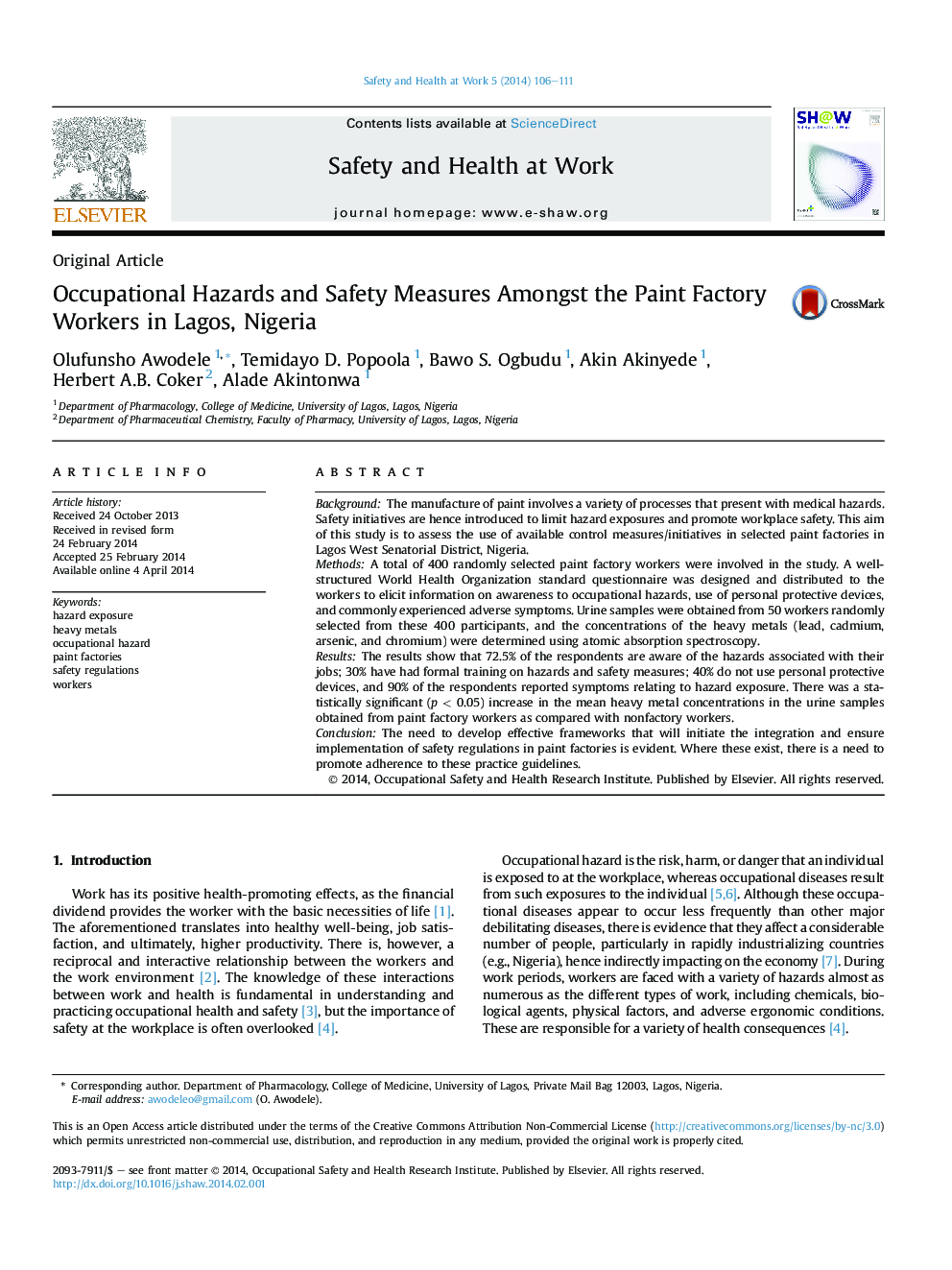| Article ID | Journal | Published Year | Pages | File Type |
|---|---|---|---|---|
| 1092145 | Safety and Health at Work | 2014 | 6 Pages |
BackgroundThe manufacture of paint involves a variety of processes that present with medical hazards. Safety initiatives are hence introduced to limit hazard exposures and promote workplace safety. This aim of this study is to assess the use of available control measures/initiatives in selected paint factories in Lagos West Senatorial District, Nigeria.MethodsA total of 400 randomly selected paint factory workers were involved in the study. A well-structured World Health Organization standard questionnaire was designed and distributed to the workers to elicit information on awareness to occupational hazards, use of personal protective devices, and commonly experienced adverse symptoms. Urine samples were obtained from 50 workers randomly selected from these 400 participants, and the concentrations of the heavy metals (lead, cadmium, arsenic, and chromium) were determined using atomic absorption spectroscopy.ResultsThe results show that 72.5% of the respondents are aware of the hazards associated with their jobs; 30% have had formal training on hazards and safety measures; 40% do not use personal protective devices, and 90% of the respondents reported symptoms relating to hazard exposure. There was a statistically significant (p < 0.05) increase in the mean heavy metal concentrations in the urine samples obtained from paint factory workers as compared with nonfactory workers.ConclusionThe need to develop effective frameworks that will initiate the integration and ensure implementation of safety regulations in paint factories is evident. Where these exist, there is a need to promote adherence to these practice guidelines.
